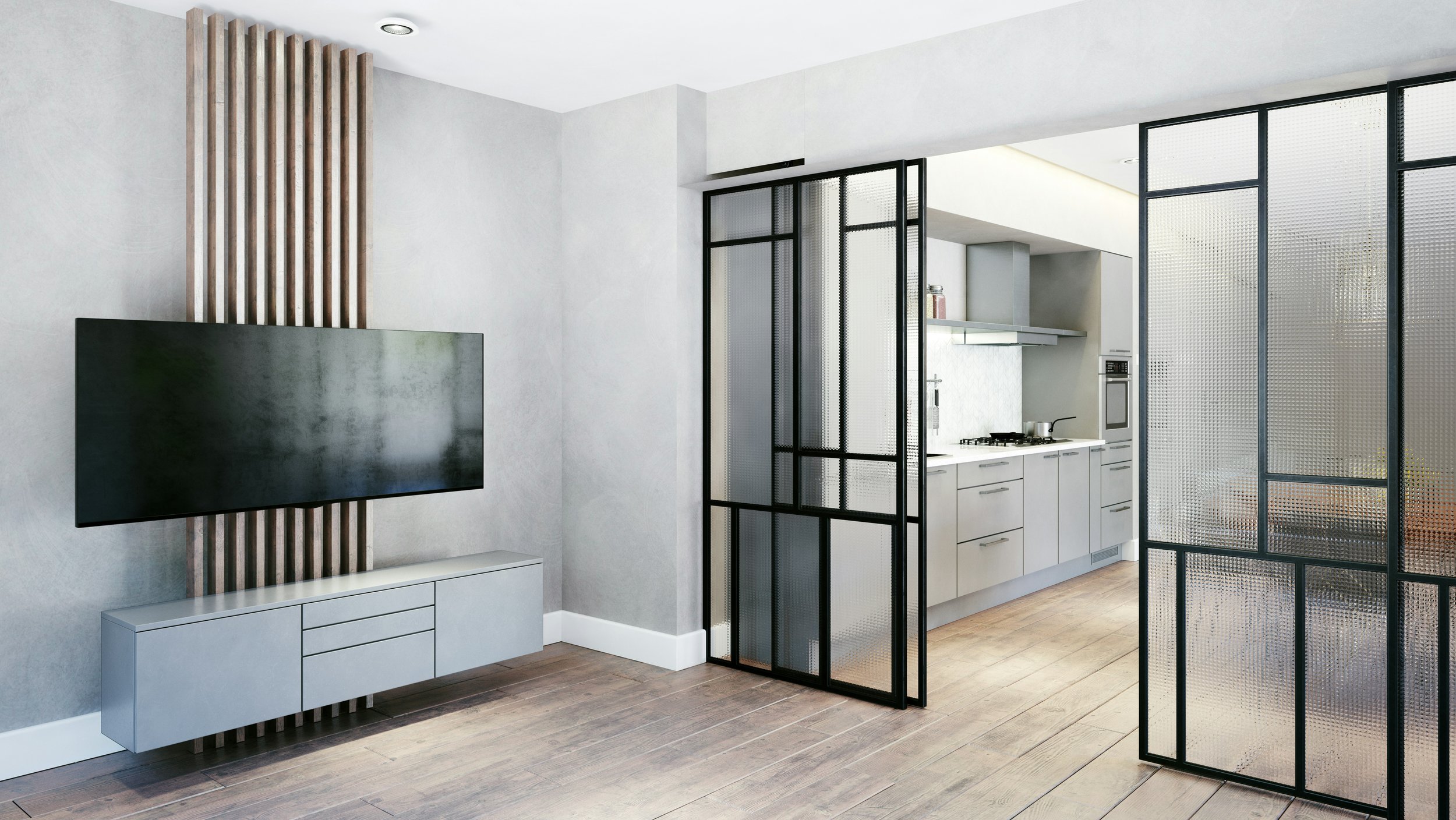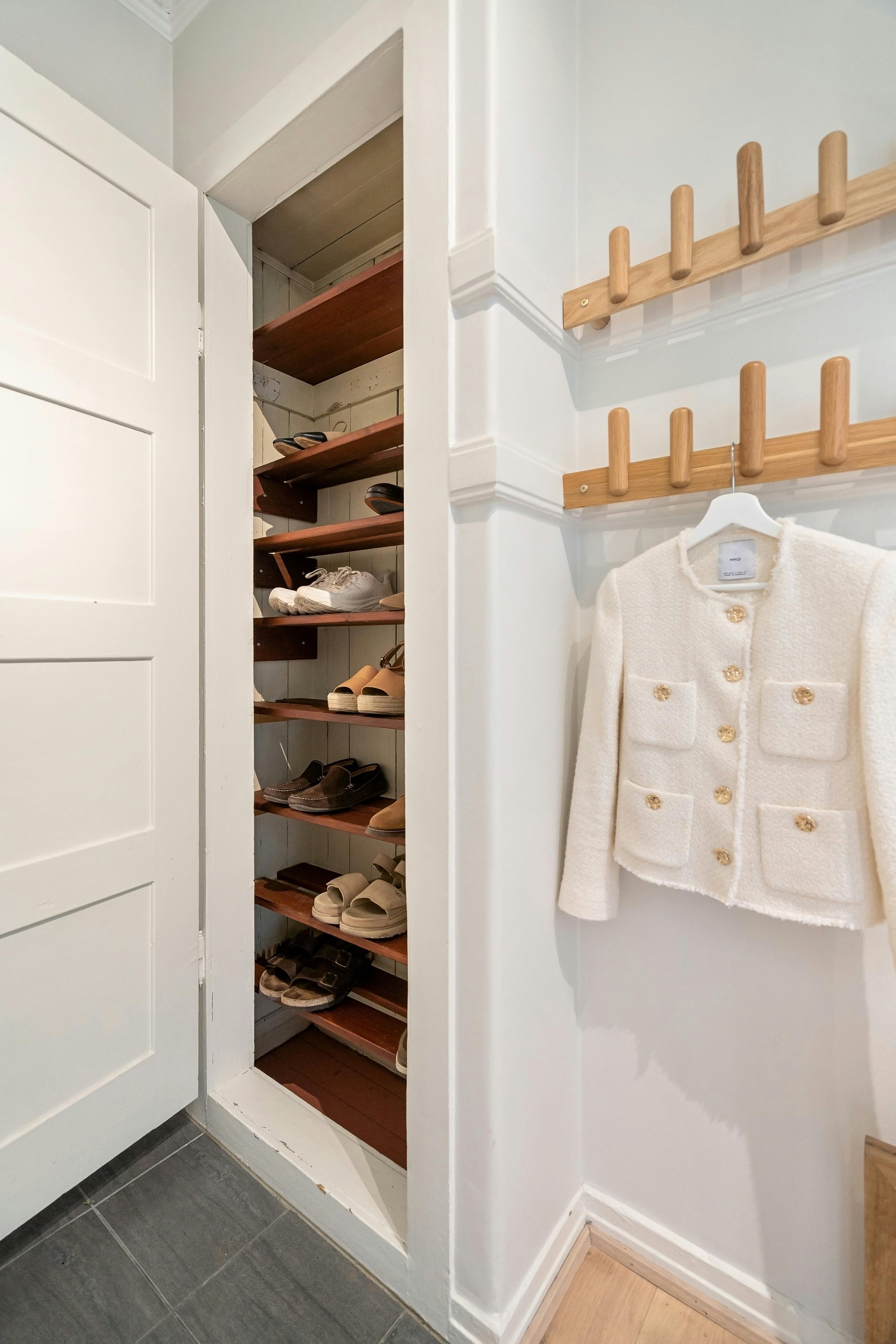Step-by-Step Guide on How to Hang a Door
Learn how to hang a door like a pro with our comprehensive step-by-step guide. From tools to techniques, we've got you covered for a flawless door installation.
Hanging a door might seem like a daunting task, but with a little know-how and the right tools, it’s a DIY project that’s absolutely doable. Whether you’re updating your home’s look or fixing a door that’s seen better days, this step-by-step guide on how to hang a door will walk you through the process. By the end, you'll have the confidence to tackle this project with ease.
Why Hang a New Door?
Before we dive into the nitty-gritty of door installation, let’s talk about why you might want to hang a new door in the first place. Here are a few reasons:
Upgrade Home Aesthetics: A new door can give your home a fresh, updated look.
Improve Functionality: A properly hung door can open and close smoothly, eliminating annoying creaks and sticking points.
Increase Energy Efficiency: Newer doors often provide better insulation, keeping your home warmer in the winter and cooler in the summer.
Enhance Security: Modern doors come with better locks and sturdier constructions, boosting your home's security.
Tools and Materials You’ll Need
Before you get started, make sure you’ve got all the necessary tools and materials. Here’s a handy list:
Tools:
Tape measure
Pencil
Hammer
Screwdriver or drill
Chisel
Level
Saw (if trimming is needed)
Wood shims
Sandpaper
Materials:
New door
Hinges
Screws
Door hardware (knob, lock, etc.)
Paint or stain (optional)
Step-by-Step Guide on How to Hang a Door
1. Measure the Door Opening
Before you start installing a new door, it's essential to measure the door opening accurately. Begin by measuring the width of the door frame at three points: the top, middle, and bottom. Note any differences and use the smallest measurement for the best fit.
Next, measure the height from the floor to the top of the frame on both sides to check for any unevenness. Again, use the smaller measurement to ensure the door will fit properly.
Lastly, measure the depth of the frame. This will ensure the door sits flush. Check the depth at multiple points to confirm uniformity. Accurate measurements of the height, width, and depth are crucial for a perfect fit and smooth installation.
2. Prepare the Door
If your door isn’t pre-hung, you'll need to customize it to fit the frame accurately. This involves several precise steps to ensure a proper fit and smooth operation.
First, trim the door to the correct dimensions. Using a saw, carefully cut the door to match the height and width of your door frame. Be sure to measure twice and cut once to avoid mistakes. After cutting, sand the edges to ensure they are smooth and free of splinters. This will help the door fit neatly into the frame and operate without sticking.
Next, mark the hinge locations. Lay the door within the frame to determine where the hinges will be placed. Typically, the top hinge is positioned 7 inches from the top of the door, and the bottom hinge is placed 11 inches from the bottom. A third hinge is usually centered between these two. Use a pencil to mark these spots accurately on both the door and the frame.
3. Cut Hinge Mortises
Now it’s time to chisel out the hinge mortises. This step is crucial for ensuring that the hinges sit flush with the door and frame, allowing the door to open and close smoothly.
Begin by scoring the outline. Place the hinge on the door where you previously marked its location. Use a utility knife to carefully score around the perimeter of the hinge. This creates a clear outline and helps to prevent the wood from splintering when you start chiseling.
Next, chisel the mortise. With a sharp chisel, carefully remove the wood within the scored outline. Work slowly and steadily, chiseling out small amounts of wood at a time to achieve the precise depth of the hinge leaf. Start by making a series of shallow cuts along the outline, then gradually remove the wood in between. Be mindful of the depth, ensuring it matches the thickness of the hinge leaf so that the hinge will sit flush with the door surface.
Once the mortise is chiseled out to the correct depth, test fit the hinge to ensure it sits properly. If necessary, make any minor adjustments by chiseling away additional wood. Repeat this process for each hinge location on both the door and the door frame.
4. Attach Hinges to the Door
With the mortises cut, you can now proceed to attach the hinges to the door.
First, position the hinges. Place each hinge into its respective mortise on the door and align it carefully. Ensure that the hinges sit flush with the surface of the door. Once positioned correctly, use a pencil to mark the locations of the screw holes on the door. This step ensures that you will drill in the right spots and avoid any misalignment.
Next, drill pilot holes. Using a drill with a small bit, carefully drill pilot holes at each of the marked screw hole locations. Pilot holes are essential because they prevent the wood from splitting when you drive the screws in. Make sure the holes are straight and not too deep, just enough to guide the screws.
Finally, screw the hinges into place. Using the appropriate screws, attach each hinge to the door. Drive the screws in firmly, but be cautious not to overtighten and strip the wood. Once all the screws are in place, check the hinges to ensure they are securely attached and sit flush within the mortises.
Repeat the same process to attach the other half of each hinge to the door frame, ensuring the door will operate smoothly once installed.
5. Position the Door in the Frame
With the hinges securely attached to the door, it's time to position it in the frame.
Begin by using wood shims. Place these shims under the door to lift it to the correct height. Shims are essential for getting the door to the proper position and ensuring it is level. Start with a couple of shims under the door's bottom edge and add or remove shims as necessary to achieve the desired height. This step is crucial for proper alignment and smooth operation of the door.
Next, check the alignment of the door. Ensure that it is centered within the frame and that the gaps around the door are even. Use a level to verify that the door is perfectly vertical (plumb) and horizontal (level). This step is vital for preventing issues with the door sticking or not closing properly. Adjust the shims as needed to correct any misalignment.
Once the door is properly positioned and aligned, you can proceed with attaching the hinges to the frame. Make sure to double-check the alignment before finalizing the installation to ensure a smooth and functional fit.
6. Attach Hinges to the Frame
Now that the door is properly positioned, you can attach the hinges to the frame, ensuring a secure and functional installation.
First, mark the screw holes. With the door held in place by the shims and properly aligned within the frame, carefully open the hinges. Use a pencil to mark the exact locations of the screw holes on the door frame. Accurate marking is essential to ensure that the hinges are positioned correctly and the door will operate smoothly.
Next, drill pilot holes in the frame. Using a drill with a small bit, carefully drill pilot holes at each of the marked screw hole locations. These pilot holes are crucial for preventing the wood from splitting when you drive the screws in. Make sure the holes are straight and not too deep, just enough to guide the screws.
Finally, attach the hinges to the frame with screws. Using the appropriate screws, secure each hinge to the door frame. Drive the screws in firmly, ensuring they are tight but be cautious not to overtighten and strip the wood. Once all the screws are in place, double-check that the hinges are securely attached and that the door opens and closes smoothly.
7. Install the Door Hardware
With the door hung, the next step is to install the hardware, including the doorknob and lock, ensuring your door is fully functional and secure.
First, install the doorknob and lock. Begin by following the manufacturer’s instructions provided with your hardware. Typically, this involves marking and drilling holes in the door to accommodate the doorknob and lock mechanism. Use the template provided to ensure precise placement. Carefully drill the necessary holes, making sure they are correctly aligned. Once the holes are prepared, insert the lockset and doorknob components into the door. Secure them with the screws provided, tightening them firmly but not excessively to avoid damaging the door.
Next, check the latch. Close the door and observe how the latch interacts with the strike plate on the door frame. The latch should align perfectly with the strike plate, allowing the door to close securely and latch properly. If the latch does not align correctly, you may need to adjust the position of the strike plate. This can involve moving it slightly up or down, or side to side, and then securing it in the correct position with screws.
8. Final Adjustments
Before calling it a day, take the time to make a few final adjustments to ensure your door installation is complete and satisfactory.
Firstly, thoroughly test the door. Open and close it several times to check for smooth operation and proper latching. Pay attention to any sticking or resistance, which may indicate that further adjustments are needed.
If adjustments are necessary, particularly if the door sticks or doesn’t close properly, revisit the shims and screws. Loosen or tighten the screws holding the hinges and shims to fine-tune the door’s alignment within the frame. This process may require small incremental adjustments until the door operates smoothly and latches securely.
Once the functionality is confirmed, consider the aesthetics. If desired, paint or stain the door to match your interior decor. Choose a suitable paint or stain based on your preferences and follow the manufacturer’s instructions for application. Ensure the door is clean and dry before applying any finish, and allow sufficient time for it to dry completely before regular use.
By completing these final steps, you ensure that your newly installed door not only functions perfectly but also enhances the overall look and feel of your space.
Conclusion
Hanging a door might seem like a tricky task, but with this step-by-step guide on how to hang a door, you'll be able to tackle it like a pro. Remember, the key to a successful door installation is patience and precision. Take your time, measure twice, and don't rush the process. With the right tools and a bit of know-how, you'll have a perfectly hung door that opens and closes smoothly, enhancing both the functionality and aesthetic appeal of your home. So, roll up your sleeves, grab your tools, and get ready to master the art of hanging a door!
Frequently Asked Questions
Why won’t my door close properly?
If your door won’t close properly, it could be due to misalignment. Check the hinges, shims, and strike plate to ensure everything is aligned correctly. Adjust as needed.
Can I hang a door by myself?
Yes, you can hang a door by yourself, but it’s easier with a second person to help hold the door in place while you attach the hinges.
How do I trim a door to fit?
To trim a door, use a saw to cut the bottom or sides to the correct size. Sand the edges smooth to prevent splinters and ensure a clean finish.
Do I need to paint or stain my new door?
Painting or staining is optional but recommended to protect the door from moisture and wear. It also allows you to customize the look to match your home’s decor.
What should I do if my door is too tight in the frame?
If your door is too tight, use a plane or sandpaper to shave down the edges until it fits properly. Be sure to test the fit frequently to avoid removing too much material.

















